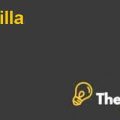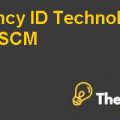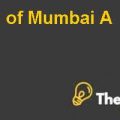
Introduction
The matter of the case is about the supply chain management. Virginia Mason, a midsized non-profit organization, and Owen and Minor, a leading distributor of medical and surgical supplies to acute care hospital market, were considering the methods of supply chain which would be suitable for the company’s supply chain management.
Virginia Mason
Virginia Mason, a medical center, is a mid-sized, private, non-profit organization located in Seattle. The company owned 336 licensed beds in its medical center, employing over 400 physicians and earned $665 in revenue. It offered both primary and specialized care and was affiliated with the University of Washington as a teaching site. Nearly a century after its founding, Virginia Mason continued to be a largely consensus driven organization, carrying a vision “to be the quality leader and transform health care”
Owens & Minor
Owens & Minor (O&M) operated in medical/surgical supply industry. Being one of the leading distributors of medical and surgical supplies to the acute-care hospital market, Owens & Minor earned $6.8 billion in 2007, with net income of $72 million. The leading segment of the company was disposable supplies which accounted for $34.5 billion in revenues in 2005. O&M’s distribution centers served customers within a 200-mile radius using mostly leased truck. O&M distributes over 180,000 finished medical and surgical products produced by over 1200 suppliers to approximately 4,100 health care provider customers from 45 distribution centers nationwide. The products include gloves, wound closure devices, sterile, procedure trays, operating room items and intravenous products etc; the company’s primary customers are acute-care hospitals which account for approximately 90% of O&M’s revenue. Apart from distribution, the company also offered supply-chain management services and private label products.
Q1). What is your evaluation of the Total Supply Chain Cost (TSCC) program developed by Owens & Minor (O&M) and Virginia Mason (VM)?
In March 2004, a team of Virginia Masons including, Daniel Borunda, materials system manager, Tom Nance, director of purchasing and John Donnelly, administrative director of supply chain visited O&M’s corporate offices where Stefanic, director of cost management at Owens & Minor gave his activity-based pricing presentation. After that Virginia Mason decided to engage O&M as its medical/surgical supply alpha vendor. Virginia Mason transferred the existing Low Unit Measure (LUM) and Just in Time (JIT) deliveries throughout the organization to O&M. In February 2005, Virginia Mason started to work with O&M in order to establish a new comprehensive activity based pricing method, Total Supply Chain Costs (TSCC) program that would minimize the supply chain costs between both companies.
Just like the other distributors, O&M was also using a cost plus pricing method where the distributor adds a mark-up on the product and charges it from the customer. Due to the limitations of cost plus pricing, the distributors were left with only low margin items, as the providers directly buy the higher value item from the manufacture in order to save costs.
After the meeting, both VM and O&M worked towards the TSCC program. The main idea of TSCC program was to minimize the extra costs related to supply chain using activity based management. The TSCC program enables VM and O&M to identify several cost drivers assigned to different cost pools including, occupancy, delivery and supplier costs. Moreover, many critical facts were discovered as a result of TSCC program.
TSCC program enabled VM and O&M to identify the largest driver of costs in the distributor/ provider relationship that was the number of stock keeping unit (SKU) on hand, which was ignored by the industry. This identification of a new cost driver was a big success of TSCC program. This cost driver included inventory cost, interest on inventory, occupancy cost, warehouse cost, and overhead cost of each SKU.
An evaluation of two customer groups done by O&M reveals the actual cost of servicing incurred for both customers and the customer profitability were not the same. Both the customers purchased $1,500,000 per month and had the same average number of line and orders per month. Customer A purchased 2900 different SKUs, whereas, Customer B purchased 8,000 different SKUs. However, the customer profitability of each customer was not the same. This was because the effort and expense was much greater for Customer B. O&M’s cost of servicing Customer B was higher than for Customer A, due to the higher number of different SKUs purchased by Customer B and the distribution fees for both the customers were the same in a cost-plus pricing model. In the ABC costing model, the distribution fees for the customers ordering a higher number of SKUs should be charged accordingly as it increases the service cost of those customers...........................
This is just a sample partial case solution. Please place the order on the website to order your own originally done case solution.
Virginia Mason Medical Center (VM) hired Owens & Minor (O & M) as the alpha provider of medical / surgical equipment in 2004. By 2005, O & M acted JIT and LUM services for VM, but they believed that the industry's pricing model is outdated. VM and O & M partner to create the Total Supply Chain costs (TSCC) the price of the program based on a model which contains all the drivers cost distribution and processing equipment for the VM, and assured, O & M of profit. TSCC incented VM optimize its distribution activities, as they will directly influence its collection. After beta testing the TSCC one year, VM Daniel Borunda and O & M Michael Stefanic believed that TSCC was better and more cost-effective pricing model, but they could convince their companies to invest in TSCC? "Hide
on VG Narayanan, Lisa Brem Source: Harvard Business School 27 pages. Publication date: April 15, 2009. Prod. #: 109076-PDF-ENG
Virginia Mason and Owens & Minor SWOT Analysis
Virginia Mason and Owens & Minor have been in business for over a century.
How does this business get ahead in the industry? Here are some of their strengths:
They first started as a medical service in the 1930s. The business was one of the first to use PESTLE analysis. In fact, their PESTLE analysis is still one of the most popular methods used by companies today.
PESTLE Analysis is used by businesses today in many different ways. Some businesses use it to determine if they need to adjust their operations. For example, a company could use PESTLE analysis to see if their pricing structure could be changed to better suit their customers. If they are able to provide better value to their customers, then they will increase their sales.
Another way that PESTLE Analysis is used by businesses today is to determine whether or not to cut back on costs. If they see that their PESTLE analysis numbers aren't moving higher, then it's likely that they are cutting back on their overhead.
As a service, the company developed a system for measuring profits, called Case Study Analysis. This system uses surveys of customer satisfaction to determine how the business is doing. Case Study Analysis is now used by many services today. It gives the service owner a look at how they are doing compared to other medical services.
Some services go beyond the use of PESTLE Analysis by developing additional techniques such as SWOT Analysis. Their SWOT Analysis technique will allow the services to take a good look at their current and future profit potential.
The medical service should develop a system for SWOT Analysis. It will help the service owner to determine whether or not they are currently maximizing the profit potential for their business.
PESTLE Analysis is great, but a small business can never reach the kind of heights that a large company can reach. Many of the bigger medical services have a strong presence in the market. The smaller services must do more than just make money, they have to also develop an image for themselves so that they can remain competitive.
By developing SWOT Analysis, a service can do this. They must use the data they gather from their Case Study Analysis and SWOT Analysis to develop a marketing plan that will allow them to develop a strong reputation in the market. A well-planned marketing plan will be able to help a small service reach its full potential.
Any service is going to require the help of a marketing consultant to help them develop a good marketing plan. They will be able to develop a marketing plan that will benefit both the services and the marketing consultant. There are many reasons why a medical service needs a marketing consultant.
A management consulting firm will be able to create a marketing plan that allows the healthcare service to leverage all of its marketing resources to maximize profits. By hiring a management consulting firm, the service owner can focus all of their marketing resources on finding new customers.
Virginia Mason and Owens & Minor PESTLE Analysis
Virginia Mason and Owens & Minor Medical Care Company have a Project Management for Health (PMH) program. The PMH program is created to assist the Company in creating a concise and standardized Health Management System (HMS) that can serve all of its medical staff. The project can be viewed as a case study for the PMH.
With this program the Medical Care Company is implementing a unique methodology to promote the introduction of Health Management Systems into its facility. The PMH Program will have a great impact on the overall health of the Medical Care Company and it will improve patient care.
The greatest benefit that this type of system has for surgical centers is that it promotes better utilization of available technology. In a clinical setting with a larger population that is comprised of patients who are ambulatory, it is necessary to have a way to manage the use of the equipment and materials that are used during surgery.
The case study analysis presented here will attempt to help the reader understand the initial review and implementation of the project. It will also help to illustrate the competencies needed to complete the work. There are many tools that are used to monitor health care organizations, but the use of the PESTLE study helps to identify the strengths and weaknesses of the organization.
The organization should be able to use the tools provided by the PESTLE for Health case study analysis to develop and assess the most effective practices within the Medical Care Company. The case study can be used to identify the strengths and weaknesses that will provide information that will help in improving the overall systems. This case study will help to improve organizational competency and the medical center's performance.
An interesting fact about the PMH Project Management for Health Program is that it involves a software program. The medical center will use software to develop a system that can serve the surgical center's health care needs. The case study will help the reader understand the competencies required for software development and will help the Medical Care Company determines which tools are necessary to create the system.
The PESTLE case study analysis was able to provide the Medical Care Company with the information needed to effectively create the best possible medical management system. The medical center's ability to expand and maintain patient care will be improved. The System will provide more efficient use of resources and reduce redundant efforts.
The case study analysis is a very important tool that can help the Medical Care Company and the hospital understand the strengths and weaknesses of the project. The program provides the organizational competency that will help the Medical Center determines what types of tools are necessary to achieve the project. The case study provides an overview of what tools were implemented and how well they were utilized by the Medical Center.
It is important for the Medical Care Company to understand the capabilities and weaknesses of the current systems before creating new ones. The process of creating the medical management system will provide the information needed to identify what types of tools are necessary to manage the systems. The PESTLE process can be utilized by the Medical Center to determine the competencies needed for software development.
The project management should include all of the employees at the Medical Center. This process will help to identify the competencies needed for the Medical Center must implement the project to ensure it will be successful. The case study analysis can be used by the Medical Center to identify the strengths and weaknesses of the management project.
It is important for the Medical Care Company to ensure that each member of the team knows what is expected of them when it comes to the management system. There should be an understanding of the requirements that will help to identify the competencies needed for creating the system. the system.












